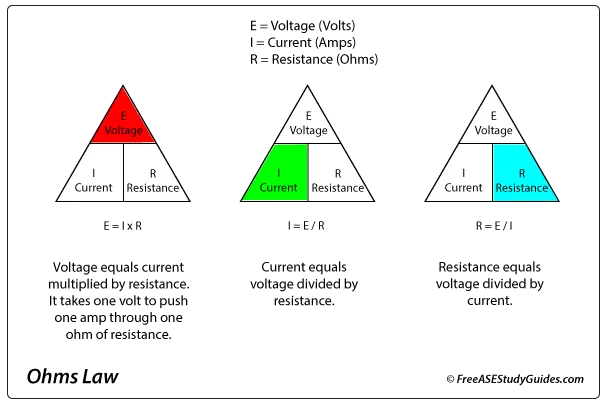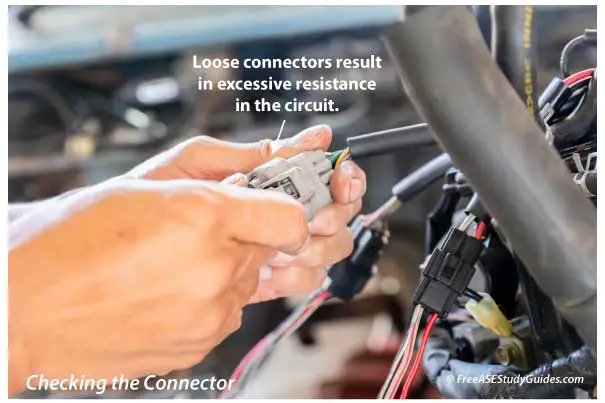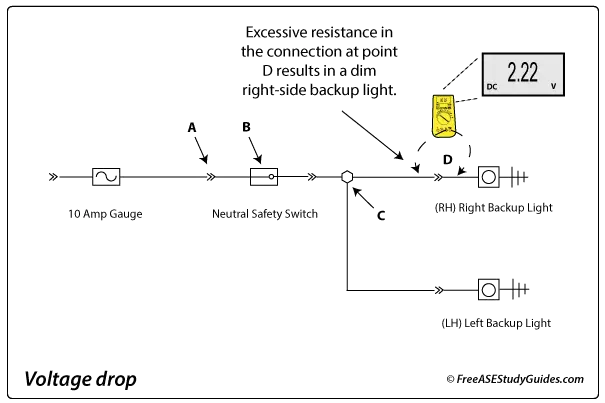Resistance in the Backup Light Circuit

Resistance is the opposition or hindrance to the flow of electrons in a circuit. Connectors, switches, and wires all offer some resistance. The longer the wire, the more resistance. Use the formula for resistance (R = E/I) to calculate resistance in a circuit by providing the voltage and current values. For example, a 12-volt circuit with 4 amps of current has 3 Ohms of resistance. R(3) = E(12) divided by I(4).

Loose connectors, damaged wires, and switch contacts are often at fault. Resistance causes heat and deprives the load of necessary voltage. As a result, light bulbs will glow dimmer, and motors will turn slower.

Voltage drop is the voltage lost as it passes through a component or resistance in a circuit. For example, the connector above is loose or damaged and dropping over 2 volts, depriving the right-side backup light of necessary voltage.